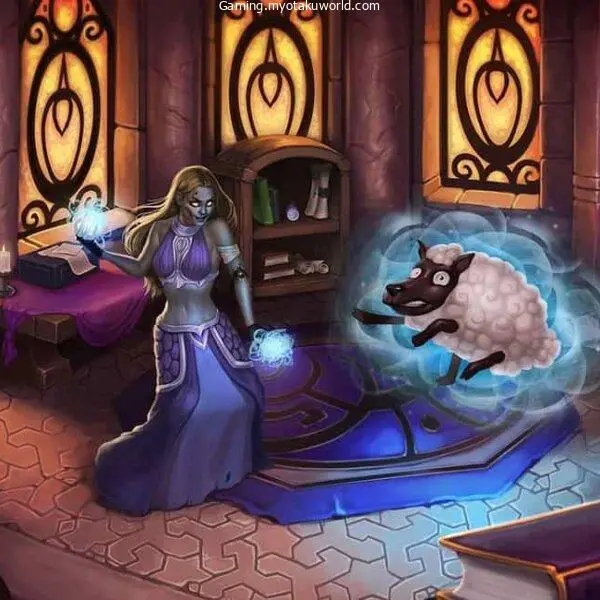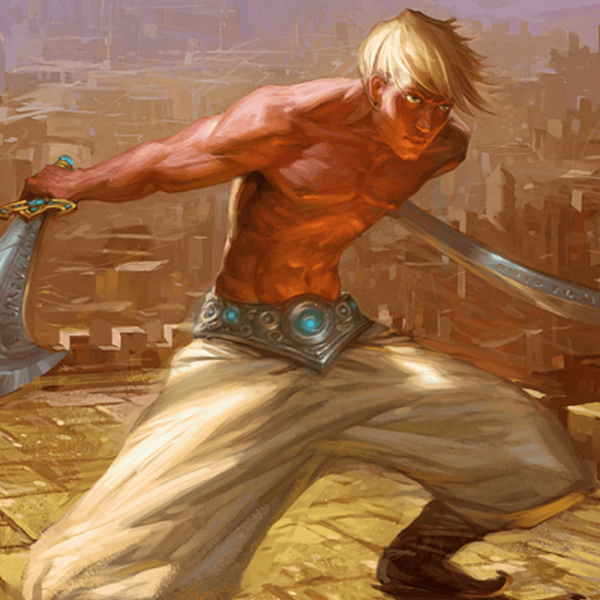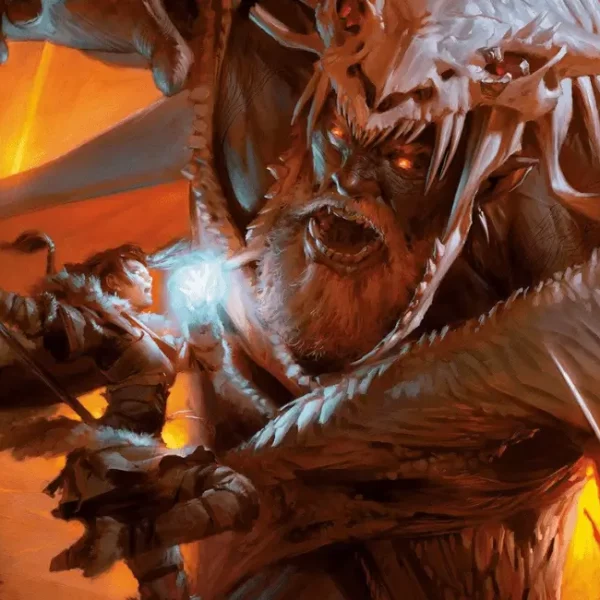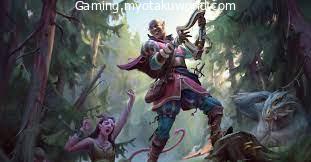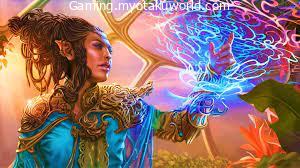In the fictional worlds of DnD, there are as many different combat methods as there are in the actual world.
One is fighting two-handedly while brandishing a weapon in each hand.
With an axe in one hand and a short sword in the other, the fighter carves his way through the ranks of the opposition, forgoing the shield’s protection.
Check out our Five-Ed Two-Weapon Fighting tutorial.
- What is Two-Weapon Fighting 5e (TWF)?
- How Does Two-Weapon Fighting Work in DnD 5e?
- What Weapons Should I Use for Two-Weapon Fighting?
- Does Dual Wielding Count as Two Attacks?
- Can Any Class in DnD Dual Wield or Two Weapon Fight?
- The Pros and Cons of Two-Weapon Fighting
- Who Should Choose Two-Weapon Fighting?
- Is Two-Weapon Fighting Worth It?
- FAQs
What is Two-Weapon Fighting 5e (TWF)?
Fighting with two weapons at once is something that any character can do, though some are better at it than others as it lends itself naturally to those of the fighting classes.
But, it can be learned by anyone to varying degrees of success. The Player’s Handbook explains how it works thus…
- Taking the attack action whilst wielding a light weapon in each hand, you can make an additional attack with your offhand weapon as a bonus action.
- Do not add the modifier you’re making the attack roll with to damage from the offhand weapon attack, only the designated primary weapon.
- If your weapon has the properties of a missile weapon, you can throw it instead of making a melee attack.
How Does Two-Weapon Fighting Work in DnD 5e?
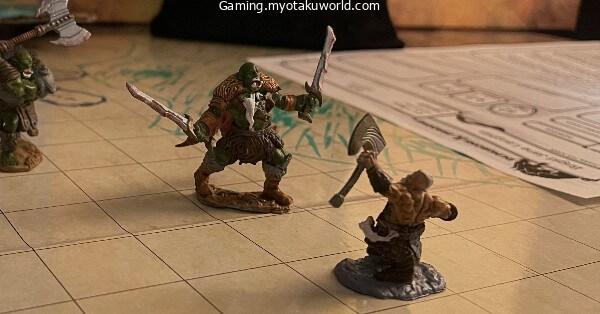
In DnD 5e, there are special rules for using two weapons simultaneously. Dual-wielding gives the player a chance to make an attack with each hand, but only under certain conditions.
According to the game rules, a character can only fight with two weapons if both weapons are light, and they won’t be able to add a damage modifier to the second attack.
If the weapon in their off-hand also has the thrown quality, characters can choose to make a ranged attack with that weapon.
Here’s the downside: dual-wielding requires the use of a player’s bonus action.
Each turn, a character will need to use their bonus action to make that additional attack.
Here’s a short overview of the rules for Two-Weapon Fighting in DnD 5e:
- Any class can dual wield in DnD 5e
- Two-weapon fighting requires light weapons unless a character takes the Dual Wielding feat
- Unless a character learns the Two-Weapon Fighting feature, they can’t add a damage modifier to attacks made with their off-hand
We can see from the ruleset that two-weapon fighting is only possible with light weapons.
And when a character makes an extra strike using their bonus action, the attack is made without a damage modifier.
These limitations, however, can be overcome by acquiring additional feats and abilities.
What Weapons Should I Use for Two-Weapon Fighting?
According to the standard weapons chart found in the Player’s Handbook the weapons you can use for Two-Weapon fighting are:
- Clubs
- Daggers
- Handaxes
- Light Hammers
- Sickles
- Scimitars & Shortswords
Clubs
Clubs are probably some of the worst weapons in the game and unless you’re making a fashion statement, dual-wielding clubs are pretty pointless. Their damage is weak and they don’t have any of the fun weapon properties that make Two-Weapon fighting worthwhile.
Daggers
Daggers are some of the best weapons to pick for Two-Weapon fighting from a versatility standpoint. They have Finesse, Thrown, and the Light property.
This makes them incredibly versatile in a fight when you can stab a fellow and throw a dagger at another one in the same turn. Their damage is limited though, so unless you start enchanting your daggers, you’ll quickly be outclassed when it comes to DPS (damage per second).
Handaxes
Handaxes are pretty much in the same category as Daggers. They deal more damage but lose the Finesse weapon trait. They’re decent, and if the Dexterity bonus from Finesse doesn’t work for your character, you can ignore Daggers and use Handaxes.
Light Hammers
The Light Hammer is just as useless as the Club, but now you can throw it. Daggers and Handaxes outclass it in every category.
Sickle
The Sickle is a terrible weapon choice. It has low damage, can’t be thrown, and has no Finesse bonus. I honestly have no idea why you would use it other than aesthetics.
Scimitars & Shortswords
This is what you were all waiting for. A dual-wielding swordsman spinning amongst their enemies in a whirlwind of blades… it’s a pretty common image and the one most of us go to when we think of Two-Weapon fighting.
Scimitars and Shortswords are basically identical in DnD 5e terms. The only differences are the damage type and cost.
- Scimitars deal Slashing damage and cost 25 gold.
- Shortswords deal Piercing damage and cost 10 gold.
That’s basically it (other than aesthetics) so you can choose whichever one looks cooler to you, or pick up one of each.
They both deal 1d6 damage which is at the higher end of the Light weapons and both have the Finesse property. If you’re going to be using Two-Weapon fighting, these are going to be your best bet.
The only exception is if you want the option to use a thrown weapon, in which case you would use Daggers or Handaxes.
Dual Wielder Feat Weapons
If you’ve picked up the Dual Wielder Feat (you should) then any weapon you can wield 1-handed can now be dual-wielded. It ignores the Light requirements and you can mix and match to your heart’s content.
You could make a Bard that wields 2 Warhammers and uses their enemies as drums.
You can use the classic Gladiator combo of Trident & Net.
You could even make a character wearing an Energy Dome Hat with a whip in both hands. They would, of course, have to be named Devo.
Does Dual Wielding Count as Two Attacks?
When wielding two light weapons, characters who make a melee attack can use their bonus action to make a second attack with their off-hand. In 5e, each player gets a single bonus action per turn.
For this reason, using a bonus action to make an extra attack doesn’t count as two attacks. It counts as an attack, and a bonus action.
Characters who gain extra attacks will still be able to use their bonus action. For example, a second level Fighter with two shortswords can use Action Surge and a bonus action to make three attacks in a single round.
Can Any Class in DnD Dual Wield or Two Weapon Fight?
Some classes gain access to special rules about two-weapon fighting, but any class can use their bonus action two make a second attack, provided they are using light weapons.
Wizards, clerics, and druids can even take advantage of two-weapon fighting. While Rangers and Fighters can both learn special two-weapon fighting techniques, any class is free to dual wield if they want to.
While it’s true that any class can fight with two light weapons, it’s not always a good option.
As we’ll see later, some classes will benefit much more from this technique than others.
The Pros and Cons of Two-Weapon Fighting
The obvious benefit of TWF is the damage you can dish out. If one weapon is good, two have got to be better.
Right?
It not only means that you get to attack at least twice in turn but is also helpful if you are utilizing an ability, such as Sneak, which requires you to hit your target to be successful. Twice the attack, twice the chance of success.
It is also a great way of ramping up other combat abilities, such as the additional damage that comes with Rage or the effects of a Divine Smite. TWF is also beneficial for breaking the concentration of enemy spell casters.
Again, twice the attack means twice the amount of saving throw successes needed to stay focused on the spell at hand. It is hard to maintain your full attention on conjuring a Lightning Bolt when some pesky Ranger is whacking you with a shortsword and dagger!
No Shields
But there is always a downside. The most obvious one is losing the +2 AC bonus that comes from carrying a shield. Also, because many characters will be limited to using only light weapons when using this fighting style, it means that the average damage of each weapon is significantly less than if you had just one nastier one.
There are also certain feat combos that don’t work with TWF. Because of the restriction that you are required to use light weapons, feats such as Great Weapon Master and Polearm Master don’t stack with it.
Who Should Choose Two-Weapon Fighting?
Some characters, particularly party tanks, may already possess skills that enable them to deal more damage with a single weapon than the TWF can with two.
Therefore, the combat style you choose to use basically just comes down to personal preference. Characters with high Dexterity ratings benefit from this technique because they frequently already use lighter, finesse weapons.
The Swashbuckler subclass should always choose this style in order to increase their odds of landing a Sneak attack. Rogues may also want to do this. This should provide fighters, especially the less circumspect ones, a competitive edge, especially when dealing damage.
Even Paladins ought to think about this. However, it doubles their capacity to provide things like Divine Smite and Divine Favour, while not fitting with their conventional image.
Barbarians that mix this style with Rage will receive an additional damage bonus for every hit that connects.
Is Two-Weapon Fighting Worth It?
Whether or not two-weapon fighting is worth it depends on several factors, including a character’s class and ability scores.
Some characters will benefit more from using a single heavy weapon or playing more defensively
The following chart compares the Fighter and Ranger classes. Using average rolls, we can approximate the damage in various scenarios.
The following table compares damage after 4 rounds of combat between various classes. The table assumes characters are using optimum weapons and abilities.
For example, the Barbarian uses Rage and the Rogue uses Sneak Attack once per round.
The Fighter and Ranger are both assumed to have chosen the appropriate fighting style for the class the weapons they are wielding (Two-Weapon Fighting, Defense, GreatWeapon Fighting, etc…).
Characters are fighting Goblins (AC 11).
Level 1 Two Weapon vs One Handed vs Great Weapon Damage:
| Class (1st Level) | Two Weapon Fighting Damage* | One Weapon and Shield Damage* | One Great Weapon Damage* |
| Ranger | 47 | 16 | 34 |
| Fighter | 37 | 26 | 32 |
| Barbarian (w Rage) | 50 | 27 | 37 |
| Rogue | 52 | 40 | 13 |
* Damage after 4 rounds of combat.
At level five, characters have improved abilities. For instance, the Ranger is assumed to have enabled Hunter’s Mark.
The Fighter uses Action Surge on the first round of combat. Characters use extra attacks if they have them.
Weapon choices include shorstwords, longswords, or greatswords. Characters using a shield gain +2 to their AC. Characters are fighting Drow (AC 15).
Level 5 Two Weapon vs One-Handed vs Great Weapon Damage:
| Class (5th Level) | Two Weapon Fighting Damage* | One Weapon and Shield Damage* | One Great Weapon Damage* |
| Ranger (w Hunter’s Mark) | 78 | 59 | 56 |
| Fighter (w Action Surge) | 69 | 46 | 90 |
| Barbarian (w Rage) | 68 | 57 | 65 |
| Rogue (w Sneak Attack) | 71 | 53 | 15 |
* Damage after 4 rounds of combat.
FAQs
Can Anyone Use Two Weapon Fighting In D&d 5e?
In 5e, every single person can fight with two weapons. There are no restrictions on your class or skill level. Just grab two swords and start stabbing. The rules are about the guns themselves. When fighting with two weapons, both must be “light melee” weapons, like short swords or knives. This makes sense, since it would be hard to hold a pair of lances or a longsword in each hand and swing them at the same time. But yes, anyone can use two guns at once. You just have to make sure they are light weapons.
Is two-weapon fighting viable in 5e?
Yes, anyone can use two-weapon fighting, no matter what class they are. No one can be stopped from fighting with two weapons, and the only real limit is what weapons can be used. In the two-weapon fighting style, you can use a weapon in either hand, but the weapons must have the Light trait. You couldn’t use two longswords to fight because they don’t have the Light trait.
Can you attack with 2 weapons DnD 5e?
Yes, you can use a free action to attack with both weapons if you have a Light weapon in each hand. If the second attack hits, the second weapon’s damage rolls don’t get any extra help. The second attack can also be a ranged attack as long as it has the Light trait.
Can you two weapon fight with fists?
As written (RAW), the rules say that a weapon with the Light trait is held in the other hand. This means that a fist attack or hit without a weapon won’t work in a fight with two weapons.
Is Two-Weapon Fighting Worth It in 5e?
When you fight with two weapons, you’re more likely to make at least one hit. This is good for skills that require you to hit your target. This may not do more damage than a weapon with a single specialization, but when mixed with other spells, abilities, and poisons, it can do a lot more damage.



